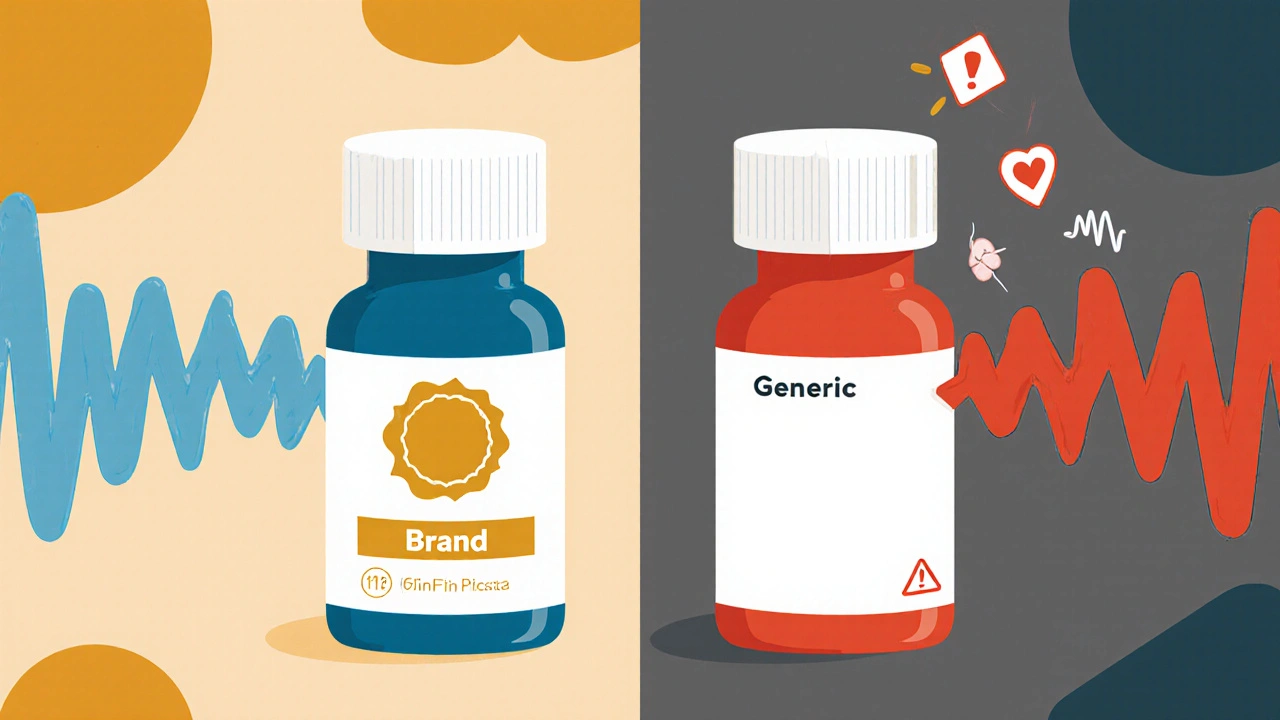Generic vs Brand: What You Really Need to Know About Drug Choices
When you hear generic vs brand, the difference between lower-cost copies and original medications made by the company that invented them. Also known as generic substitution, it's a decision millions of people face every day—often without knowing the full story. The truth is, most generics work just as well. But not all. Some drugs, like cyclosporine, a critical immunosuppressant used after organ transplants or antiseizure medications, drugs that keep seizures under control with very little room for error, have what’s called a narrow therapeutic index. That means even tiny differences in how the body absorbs the drug can lead to serious problems—like rejection or breakthrough seizures. These aren’t theoretical risks. Real patients have been hospitalized because they switched generics without knowing the stakes.
So why do generics exist at all? Because they save billions. The ANDA process, the legal pathway the FDA uses to approve generic drugs in the U.S. requires proof of bioequivalence—meaning the generic must deliver the same amount of active ingredient into your bloodstream as the brand. But bioequivalence doesn’t mean identical. Fillers, coatings, and manufacturing methods can vary. For most drugs, that doesn’t matter. For others, it does. And that’s why some doctors refuse to switch patients on immunosuppressants, drugs that prevent the body from attacking a transplanted organ or epilepsy treatments. It’s not about profit. It’s about safety. Meanwhile, in Europe, tendering systems, government-run procurement programs that force hospitals to buy the cheapest approved version push generics hard. They work for antibiotics and blood pressure pills. But they can backfire when applied to drugs where precision matters.
You’re not alone if you’re confused. Social media is full of stories—some people swear their generic seizure drug caused a spike in seizures. Others saved hundreds a month with no issues. The difference? The drug. The condition. The body. There’s no one-size-fits-all answer. That’s why this collection dives into real cases: why ezetimibe, a cholesterol drug often used when statins cause stomach problems is safe to switch, why biologic drugs, complex medicines made from living cells, not chemicals can’t be copied like pills, and how patients are using TikTok and Facebook to share what actually works. You’ll find clear comparisons of specific drugs, warnings about dangerous switches, and practical tips to talk to your pharmacist or doctor without sounding paranoid. This isn’t about fear. It’s about control. You deserve to know if your $5 generic is truly safe—or if you’re better off sticking with the brand.

